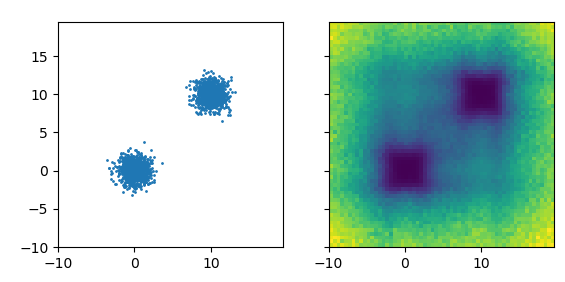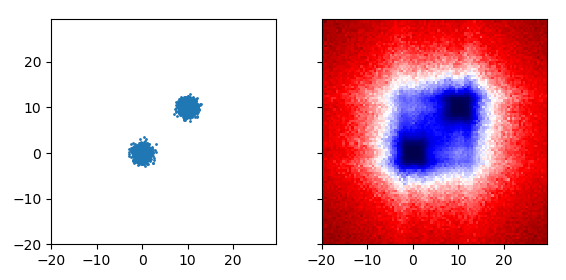Axis Aligned Artifacts for Robust Random Cut Forests
There are artifacts created by choosing axis aligned cuts in robust random cut forests, similar to what was noted with IsoForest..

Left: Original data distribution. Right: Learned co-displacement, darker is lower.

Notice the echoes around (10,-10) and (-10, 10)

If instead of either of these, you use the depth in the robust random cut forest, you get what's shown above. The first two examples are recreated by the code below:
=False
# Construct data with two modes and full of anomalies
=
=
=
=
=
# plot the original data
, =
= 300
= 256
=
# Construct forest
=
# Select random subsets of points uniformly from point set
=
# Add sampled trees to forest
=
# prepare grid for codisp measurement
, = ,
, = ,
, =
=
# measure codisp across space
=
=
=
# plot codisp
, =